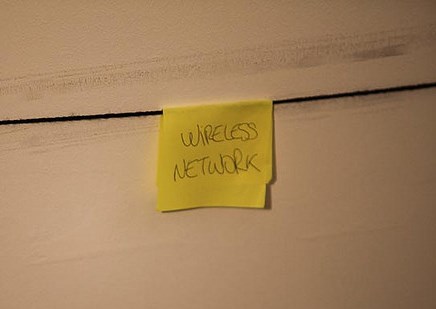Will the confluence of the Internet, Wireless Technology and LED Lighting create the perfect storm that opens up the opportunity for the Internet of Things (IoT) to rapidly establish itself in buildings?
Allan McHale,
Director,
Memoori
|
March 2014 |
[an error occurred while processing this directive] |
|
Will
LED Lighting Controls Open the Door to the Internet of Things in
Buildings?
Will the confluence of the Internet, Wireless Technology and LED Lighting create the perfect storm that opens up the opportunity for the Internet of Things (IoT) to rapidly establish itself in buildings?
|
Allan McHale, Director, Memoori |
| Articles |
| Interviews |
| Releases |
| New Products |
| Reviews |
| [an error occurred while processing this directive] |
| Editorial |
| Events |
| Sponsors |
| Site Search |
| Newsletters |
| [an error occurred while processing this directive] |
| Archives |
| Past Issues |
| Home |
| Editors |
| eDucation |
| [an error occurred while processing this directive] |
| Training |
| Links |
| Software |
| Subscribe |
| [an error occurred while processing this directive] |
Each new LED fixture can now be a node on an intelligent network
turning off the lights when people aren’t around or dimming them when
exterior light can be harvested. But those sensors can also be used to
harvest other useful data about temperature, occupancy and their
surroundings that have many other applications not associated with
lighting but other environmental controls, security and safety;
delivering value add services for the business enterprise.
Having struggled for the last 15 years to get all the environmental
services in buildings to work together we have now reached a point
where connectivity can be achieved directly through IP allowing the IoT
to become a reality. Now having completed two reports on LED Lighting and
Lighting Controls we are convinced that LED Lighting controls could now
act as a catalyst for the opening up of the Internet of Things in
buildings –
http://www.memoori.com/portfolio/smart-buildings-the-lighting-controls-business-2013-to-2017/

But if that is the case why can’t access control, video surveillance
and building energy management systems also be the ‘Trojan Horse’ for
IoT. Well they can, provided they all are IP Networked, but that is not
the case yet. In addition none of these services have the growth
prospect that LED Lighting has over the next seven years when it will be
the only source of light going into new buildings complete with an IP
Network. These networks will be in every room right throughout the
building and wireless communication has the potential to rapidly open
up the retrofit market for LED.
The case for retrofitting buildings with LED lighting has become very
compelling and wireless technology has negated the need for control
wiring so reducing the installation cost. This will result in LED
lighting controls being installed in many more buildings that don’t
have building energy management systems. Historically, building
controls applications have been HVAC centric since that was the element
of the building where controls could add significant value,
particularly in new construction applications. In many retrofit
situations the return on investment rate for HVAC oriented building
automation has not been compelling, so the majority of buildings around
the world are still waiting to be converted to “Smart.”
[an error occurred while processing this directive]
Our report has identified many instances where bus-based lighting
controls have taken the responsibility for controlling HVAC services
but this has been on relatively small to medium sized projects where
heating and cooling has been achieved through a combination of chilled
beams and natural ventilation. This has required blinds to control
solar gain and this falls into the low voltage category and has been
engineered and designed through the electrical contract and not the
mechanical, as is the case with BEMS.
In a commercial building, LED lighting networks can improve security
applications, letting people know when someone has entered a room, or
they could help with simple administrative functions, such as managing
conference room attendance or keeping track of who is using particular
areas and resources. Also mobile marketing applications that retailers
deliver promotion or offers to prospective customers as they enter or
move about a store looks ideally suited to run off the lighting network.
[an error occurred while processing this directive]
[Click Banner To Learn More]
[Home Page] [The Automator] [About] [Subscribe ] [Contact Us]